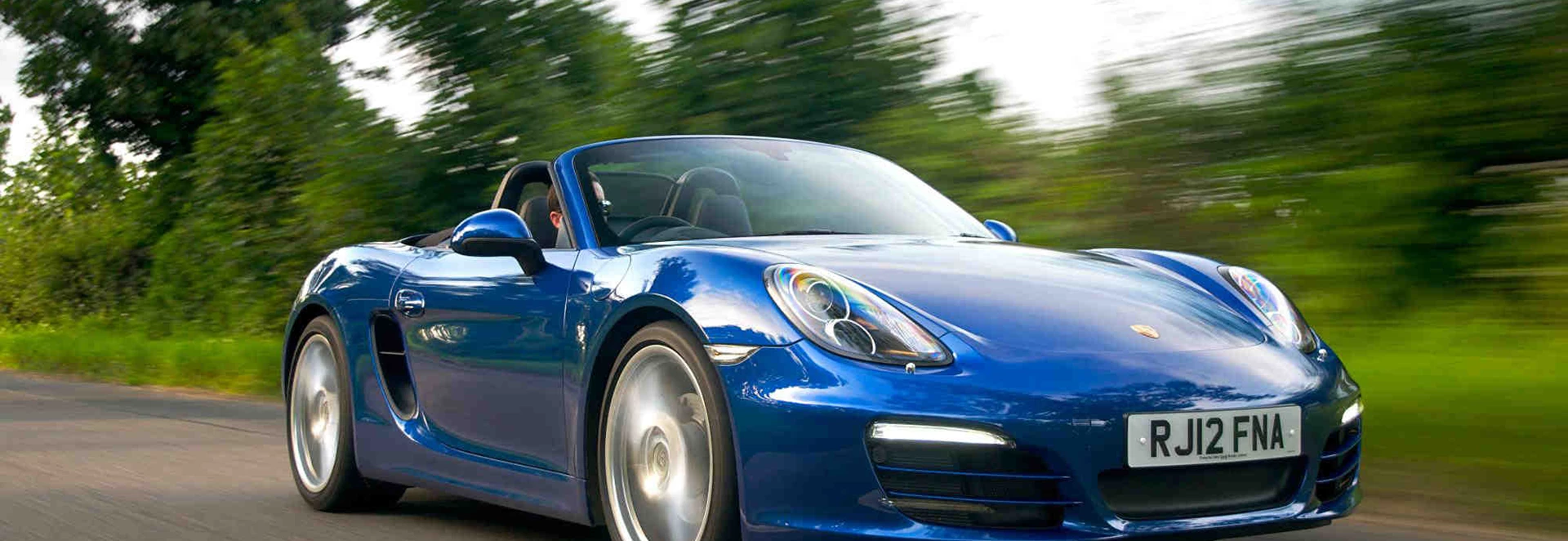The third-generation Boxster was introduced in 2012 and differed from its predecessors in being lighter and having a greater wheelbase (despite not being much longer overall), a wider track and a lower centre of gravity.
The standard model was given a new 2.7-litre engine with more power than the previous 2.9, while the Boxster S got a revised version of the existing 3.4. A more powerful 3.4 was fitted to the GTS, launched in 2014.
A six-speed manual gearbox is standard on all models, while PDK twin-clutch semi-automatic transmission is offered as an optional extra.
Among mid-sized open-topped two-seaters, the Boxster's rivals include the BMW Z4, the Mercedes SLK and possibly the more recently introduced Audi TTS Roadster.
Performance
All Boxsters can accelerate from 0-62mph in under six seconds, and several can do so in five or less. Both the PDK gearbox and the Sport+ package sharpen up the acceleration, the best time of all being the 4.7 seconds achieved by the GTS if fitted with both options. Top speeds range from 162mph to 174mph, Porsche being one of the few manufacturers that doesn't impose a 155mph speed limit on its cars.
Naturally-aspirated Porsche engines need to be revved hard to get the best from them - maximum power (261bhp, 311bhp and 325bhp for the 2.7, S and GTS respectively) isn't achieved until a very high 6,700rpm by any of the engines. But they perform adequately at much lower revs, and they also sound fabulous at any speed, whether or not the individual car has the optional facility to make the exhaust note louder.
Manual versions are intolerant of clumsy gear changes but reward smooth ones. The PDK models naturally shift from one gear to the next very smoothly, which is pleasant but perhaps less satisfying.
Ride and Handling
Ride quality, which has become a Porsche speciality in recent years, is excellent even on the largest wheels, lowest-profile tyres and stiffest suspension available.
The much more rigid body structure of the current Boxster compared with the pre-2012 ones means that they suffer far less from scuttle shake, which is now a problem only on very rough surfaces. Ride quality, which has become a Porsche speciality in recent years, is excellent even on the largest wheels, lowest-profile tyres and stiffest suspension available. The suspension is generally quite soft, though very well-damped, leading to the enviable combination of splendid road behaviour and great competence on a race circuit. Both first-timers and drivers with many years of experience can have a lot of safe but high-speed fun on a trackday. The Boxster's coupe equivalent, the Cayman, is still the better car to drive, as it always has been, but the gap is now closer than it was, and perhaps as close as it's ever going to be.
Interior and Equipment
The original Boxster was a concept car unveiled at the Detroit Show in 1993. The first production model, introduced three years later, had slightly toned-down styling but still looked very similar.
The Boxster's luggage capacity is 280 litres, slightly under two-thirds that of the Cayman, and is split roughly 50-50 (actually with a slight front bias) between one compartment near the nose and another behind the engine. A strict two-seater, it has very little storage space inside the cabin, though there is lots of room for a tall driver and passenger. Porsche is very good at designing interiors these days, but it has a tendency to charge for items that might have been expected to come as standard. In all versions, cruise control (whether standard or adaptive), heated seats, mobile phone preparation, a six-CD autochanger, DAB digital radio and a reversing camera are all extra-cost options.
Cost
There are so many options, of varying degrees of triviality, that you can easily send the price skyrocketing.
The starting price which is set just over £39,500 for an unadorned 2.7 spec seems reasonable enough in context (equivalent Audis and BMWs with similar power cost about the same). However, there are so many options, of varying degrees of triviality, that you can easily send the price skyrocketing. The GTS starts at nearly £54,000, or a great deal less than the list price of any 911. In terms of running costs, you can save a little money by spending a great deal on the PDK transmission. A 2.7 fitted with this has the best CO2 emissions in the range at 183g/km, and the lowest annual Vehicle Excise Duty payments of £225. Both the S and the GTS officially emit 190g/km in PDK form, 3g/km less than the admittedly much cheaper 2.7 manual. The figure for the remaining versions (S and GTS manual) is 211g/km.
Our Verdict
The only reason for buying a Boxster rather than a Cayman is the fact that it offers wind-in-your-hair motoring. It lags behind in other respects, being similarly priced to the Cayman but also less practical and not quite so good to drive. Overall though, the Boxster is still an excellent car, and in driving terms possibly the best Porsche of all, though lacking the history and image of the celebrated 911. Consider carefully what luxury kit you really need, however, if you want to avoid paying an incredibly large sum of money.




